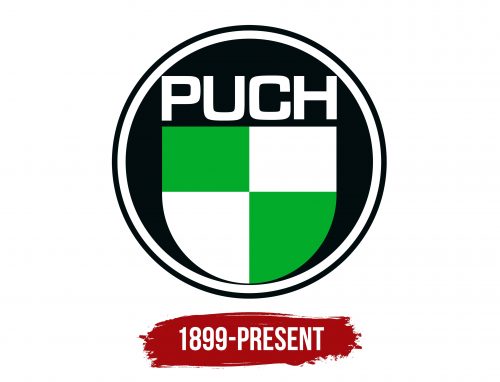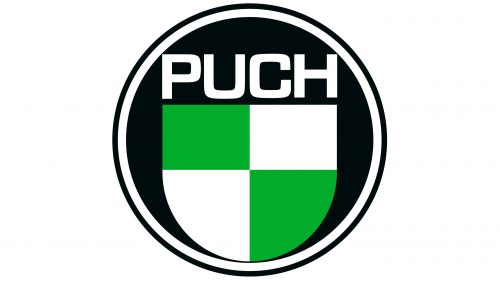The Puch logo is sporty, ambitious, and business-like. It exudes an attractive energy that has kept the brand alive despite its venerable age. The emblem reflects the Austrian company’s drive to remain youthful modern, and continuously move forward.
Puch: Brand overview
In 1899, Johann Puch founded his company in Graz, Austria, launching an adventurous journey into transportation. What began as a humble bicycle production venture soon set the wheels turning for something much bigger.
By 1901, the company revved up the game by launching its first motorcycle. The transition from pedals to petrol marked the dawn of a diversified production line. Come 1904, the company was steering into the realm of automobiles, heralding a new era for the brand.
A pivotal moment arrived in 1912 when the company merged with Austro-Daimler, blending engineering brilliance and expanding horizons. This union laid the groundwork for greater innovations and reach.
Fast-forward to 1928, and another significant turn saw the company merge with Steyr, birthing Steyr-Daimler-Puch. This powerful alliance forged a formidable presence in the automotive and motorcycle sectors.
The 1930s saw the rise of the 250 TF motorcycle in 1934, a model that quickly won hearts and showcased the company’s knack for crafting reliable, sought-after rides.
Post-war, the company shifted gears toward innovations. 1953, the MS 50 moped hit the streets, symbolizing affordable and efficient transport. Four years later, in 1957, the 500 microcar, based on the Fiat 500, rolled out, charming many with its compact design and practicality.
The 1960s and 1970s roared in with rugged off-road vehicles. The Haflinger, debuting in 1969, showcased the company’s engineering versatility. This was followed by the Steyr-Puch Pinzgauer in 1971, further solidifying the company’s reputation for durable and versatile off-roaders.
In the world of two-wheelers, 1975 saw the launch of the Maxi moped, a bestseller and a beloved model for countless riders.
The 1980s brought a wave of change. In 1987, the motorcycle division was sold to the Italian giant Piaggio, marking the end of the company’s motorcycle production era.
By 1998, Steyr-Daimler-Puch sold the rights to the brand to Magna International, reflecting shifts in the automotive industry. This transition marked a change in focus, and by 2000, the brand was no longer used on new vehicles.
Yet, the brand’s legacy refused to fade. In 2011, the brand saw a revival with a limited series of the Mercedes-Benz G-Class in Austria, breathing new life into the storied name.
Meaning and History
What is Puch?
It is an Austrian brand known for producing many vehicles, including bicycles, motorcycles, mopeds, and cars. The company has a long history of producing reliable and innovative two-wheelers popular in various markets worldwide. The products are known for their durability, practical design, and technical excellence.
1899 – today
This manufacturer of motorcycles, cars, and bicycles is known for its product range and identity consistency. Its logo is well-known to Austrian motorists, cyclists, and motorcyclists because it adorns every model. The simple design and classic form attract the attention of both longtime fans and new customers, immediately hinting at active movement, high speed, and relentless drive.
The simple sign contains great strength, encoded in three main elements: the name (specifically its design), the shield, and the background.
- The inscription is placed at the top of the logo and consists of one word – the founder’s surname. The font is smooth, even, and rounded at the edges, indicating a desire to meet customers’ needs and bring their wishes to life by offering perfect machinery. The bold glyphs symbolize reliability, stability, and strength.
- The element resembling a heraldic shield or flag has a two-tone color scheme. Four checkered segments are painted in white and green – colors taken from the flag of Graz, where the company is located. This way, the company demonstrates its authenticity and its place of origin. It is a tribute to the home city.
- The background is a classic black circle with all elements visible. The white inscription stands out against the black base, ensuring excellent readability. The white-green flag is expressive, emphasizing the brand’s uniqueness. The circle has a double frame, indicating a high level of product protection.
Together, they form an original logo that serves as the factory’s distinctive mark, promotes cars and bicycles, introduces them to potential buyers, distinguishes the company from competitors, and unites all product lines. This way, the emblem supports the manufacturer’s recognizability and popularizes its products.





